What is Fibreglass
What is Fibreglass – GRP – FRP or Fiberglass?
Glass Fibre is made from rapidly drawing and cooling molten glass. It has been known since the Egyptian dynasty, about 1500 BC.
However, glass fibres of sufficient fineness and consistency for reinforced plastics were not available commercially until the 1930’s.
There are two principal types of Glassfibre, a course staple glass fibre is widely manufactured for the use as thermal insulation. This is generally unsuitable for the use as a plastics reinforcement. The other type consists of continuous filaments, which immediately after drawing are bundled together to form strands. These in turn are made into yawn for weaving into glass cloth, or into rovings.
Glassfibre is one of the strongest of all materials. The ultimate tensile strength of a freshly drawn single glass filament (diameter 9-15 microns) is about 3.5 GPa. It is made from readily available raw materials; it is non-combustible and chemically resistant. Glassfiber is therefore the ideal reinforcing material for plastics.
It could not be used easily, however, for reinforcing the earlier types of resins such as PF, since these need to be cured under high pressure because of the steam and other volatile by-products evolved during the curing process. Under these high pressures the Glassfibre becomes mechanically damaged and loses much of its strength. As soon as the resins were developed which could be cured without the application of pressure, fibreglass was used successfully as a reinforcement, this marked the beginning of the GRP industry.
Here are some of the more common Fibreglass reinforcements used in the GRP industry in boat building applications, wind energy, leisure, marine and motorsport.
Fibreglass Matting / Chopped Strand Matting or CSM
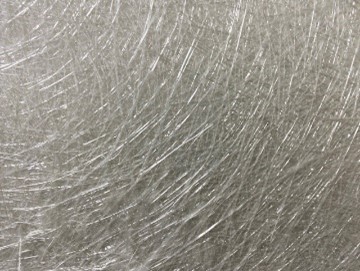
Fibreglass chopped strand matting or more commonly referred to as CSM is made up of glass strands randomly laid and held together with a binder, either emulsion bound or powder bound. In the case of Polyester and Vinyl ester resins an Emulsion bound matt is used and in the case of an Epoxy resin a powder bound matt would be used. The binder would then dissolve in the chosen Resin, and this would make the Fibreglass Matting (CSM) conform into the shape of the object being laid up on, most commonly the CSM sheets are laid on top of each other in layers combined with a resin to form a thicker / stronger part as part of a GRP (Glass Reinforced Plastic) part. Layers of other reinforcements can be sandwiched in between layers of Matt, such as core materials and multiaxial. The more common grades of Fibreglass Matt are; 300g mt/2 (1oz) , 450g mt/2 (1.5oz) , 600g mt/2 (2oz), 900g mt/2 (3oz). You can also get variations in between and lighter CSM such as 100g and 225g, chopped strands and surface tissue.
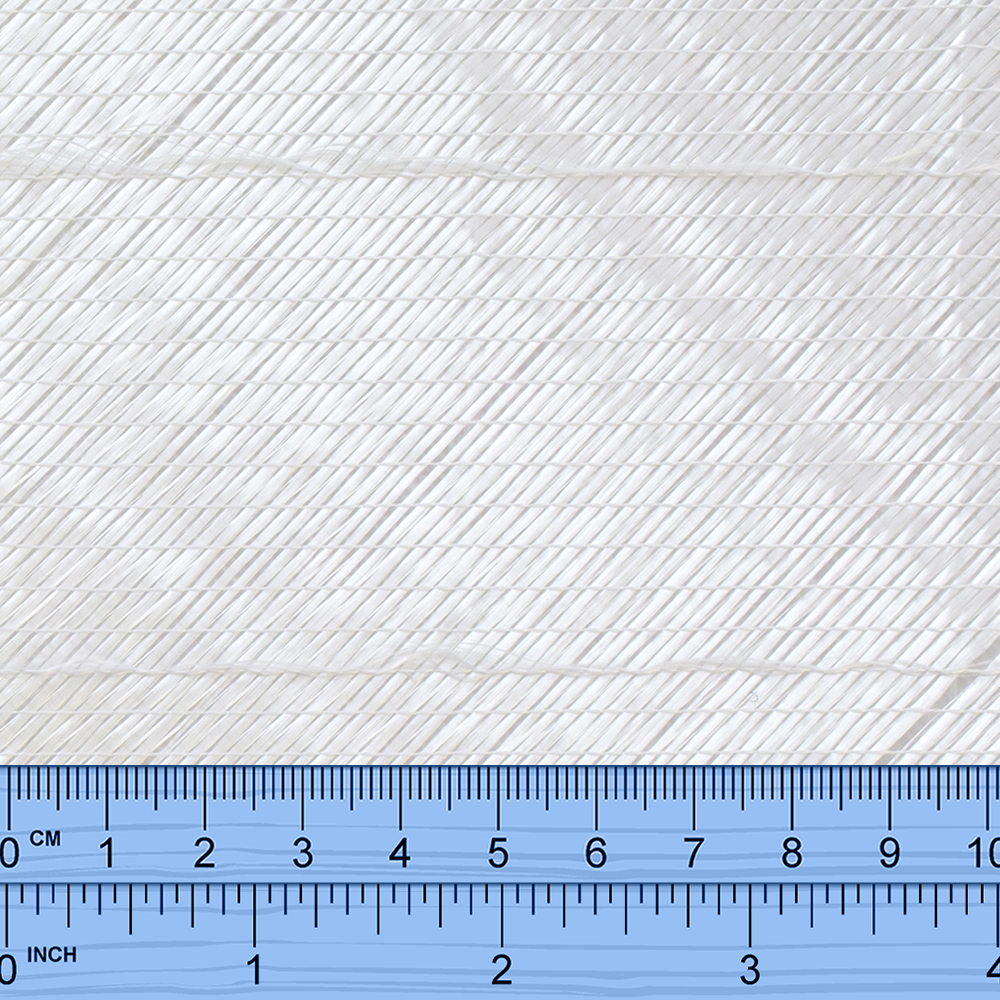
Biaxial fabric is non-woven and consists of 2 layers stitched together at +/- 45 degrees or 0/90 . Drapes nicely, used in structural work as it gives strength in 2 directions.
The + 45º (0) and - 45º (90) layers are of equal weight.
Fabric is Silane coated for easier wetting out, and is compatible with both Polyester and Epoxy Resin systems. Biaxial Fabric can be engineered for specific applications requiring different ratios of warp to weft reinforcement. This versatile fabric, made from high-quality fibres, is available in a variety of widths and weights to meet any requirements.
The input fibres are designed to give controlled wet-out and excellent laminate properties.
Each fabric can be combined with a glass mat or veil for enhanced performance or surface finish.
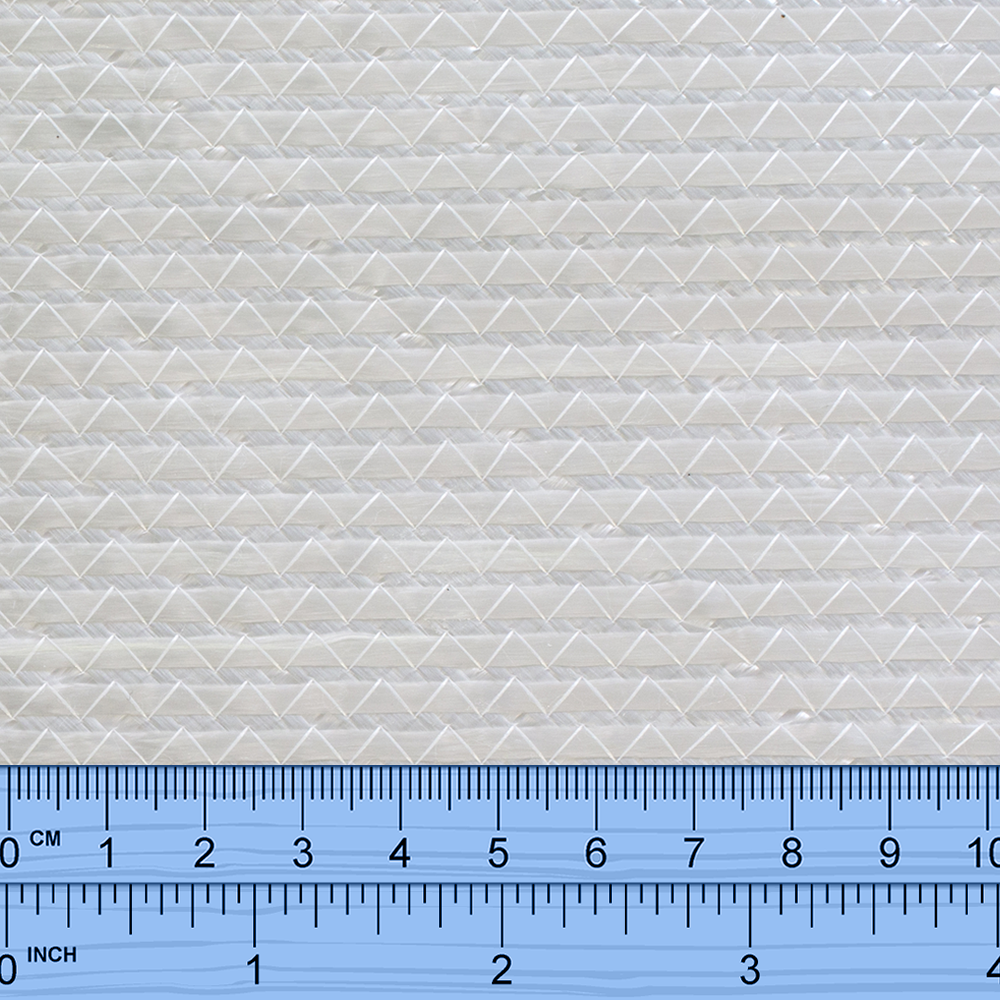
A Triaxial cloth can offer improved stiffness without added weight or laminate thickness for high performance structural laminates.
Triaxial fabrics provide multidirectional reinforcement in 3 directions, combining the strength of unidirectional with the twist resistance of a double bias.
An example applications requiring this combination of axial and off-axis reinforcement include wind turbine blades, motorboat hulls, underground storage tanks, and trailer panels.
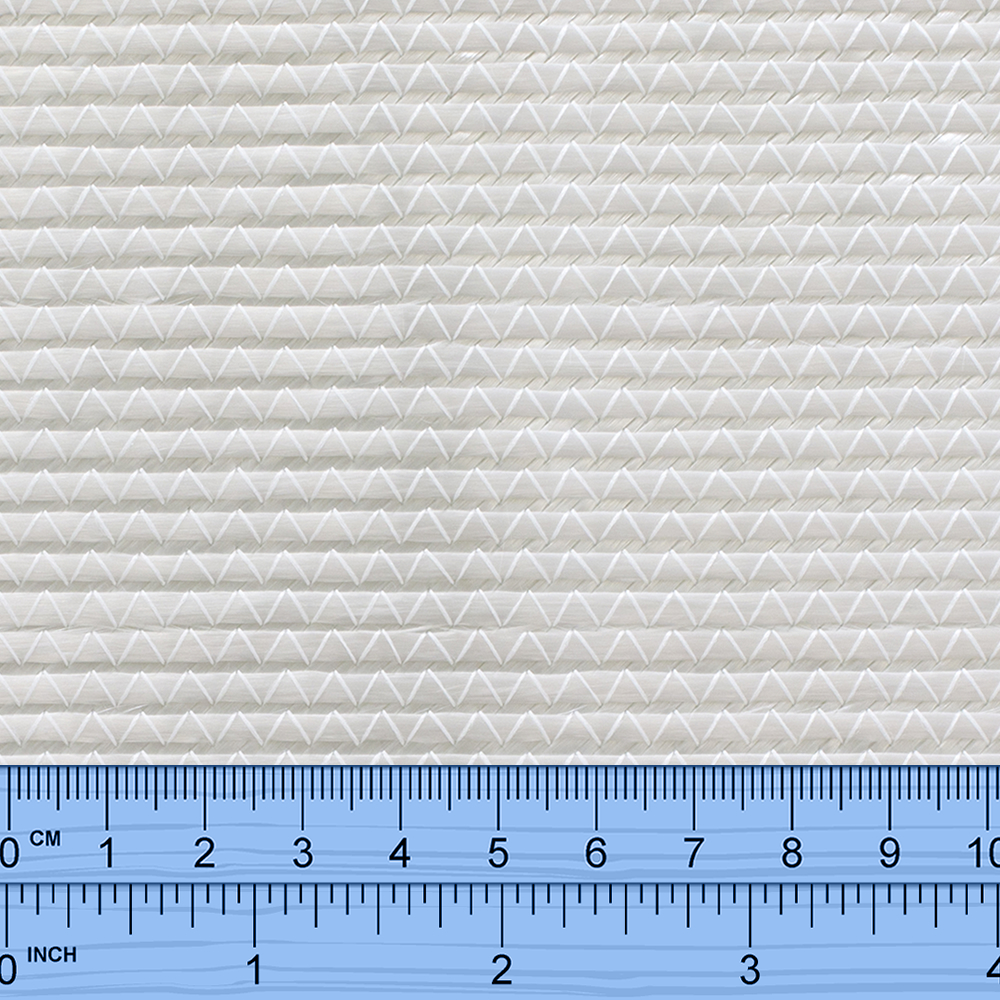
A 1200g Quadriaxial cloth would have a typical orientation like: 0, -45 , 90 , +45. Weight: 300gsm, 300gsm, 300gsm, 300gsm.The Longitudinal direction of 0 Degrees is the lengthways direction of the roll and stitching direction. The fabric, like most Glass fabrics is compatible with Polyester, Epoxy and Vinyl ester resins.
Used in applications where rapid strength build-up is required. Ideal for hull, transom, bulkhead, and flooring applications.

A biaxial fibreglass fabric consisting of +/- 45 stitched with polyester yarn to various grades of chopped strand matting, very useful for building layers rather than using individual materials separately.
The matting has no binder as its stitched to the fabric thus making it compatible with Epoxy and Polyester Resin systems. More common weights used in many industries such as marine, land transport, aviation and leisure are 450g / 225g, 600g/300g and 800g/450g. The higher number dictates the multiaxial and the lower the stitched chopped strand matting. These can be purchased in either + - 45 or 0/90 orientations.
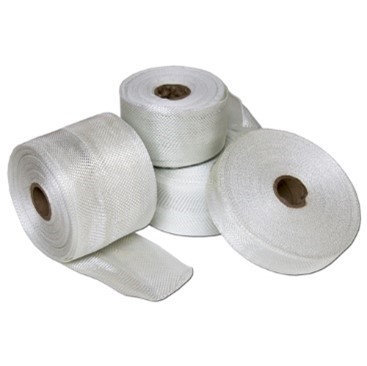
200g mt/2 Fibreglass Scrim tape becomes easily saturated with a polyester, vinyl ester or an epoxy resin, leaving a pliable form easily moulded into the desired shape. Glassfibre tape can be applied as reinforcements for GRP mouldings, small GRP components and Boat Building, more commonly used in stitch and glue canoe or kayak construction. Fibreglass glass tapes are commonly available in widths from 25mm to 150mm
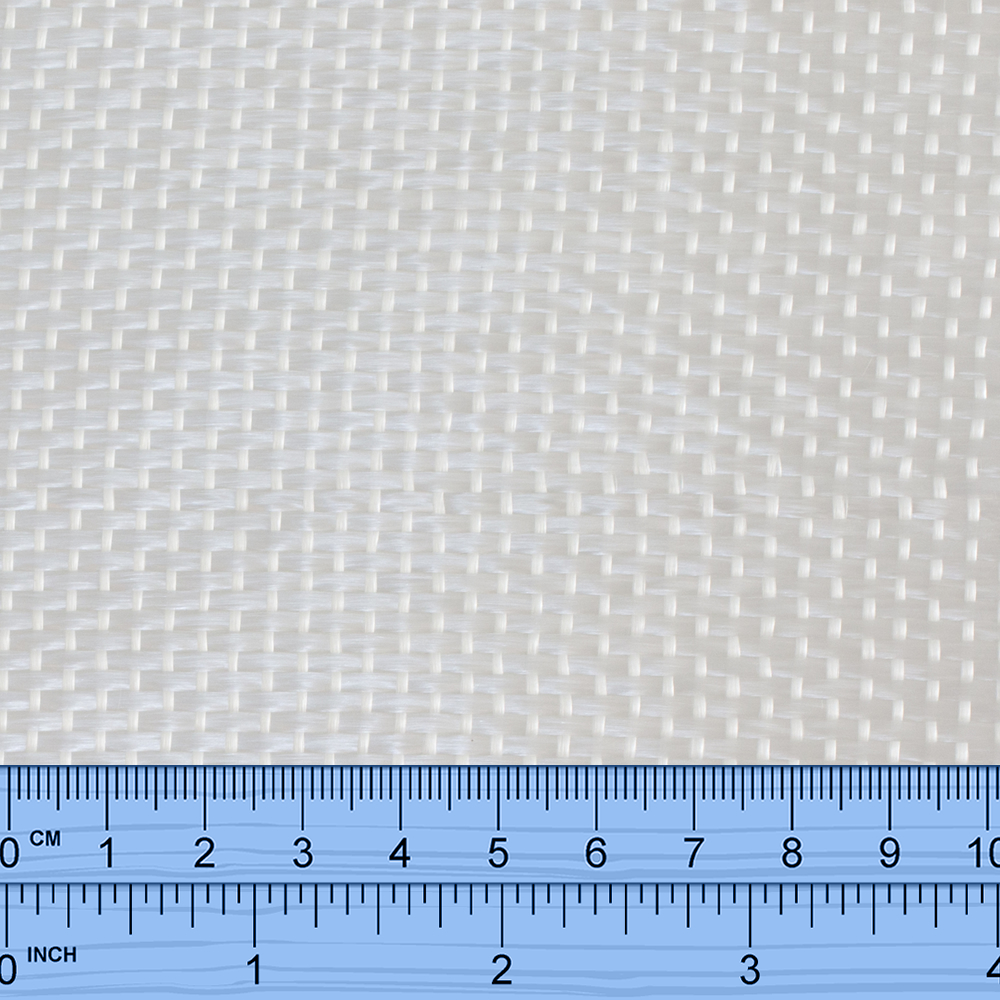
Uni-Directional cloths are most used for providing local reinforcement in the direction of the fibres. Most of the fibres are in the warp direction with a small amount in the weft to hold it together for handling.
In order to add stability to the dry reinforcement, a small amount of fibre 5-6% is added to the perpendicular direction. This can be supplied in many different widths and weights depending on application.

Twill weave fabrics have one or more warp fibres alternately weave over and under two or more weft fibres in a regular repeated manner. This produces the visual effect of a straight or broken diagonal 'rib' to the fabric. Superior wet out and drape is seen in the twill weave over the plain weave with only a small reduction in stability. With reduced crimp, the fabric also has a smoother surface and slightly higher mechanical properties.
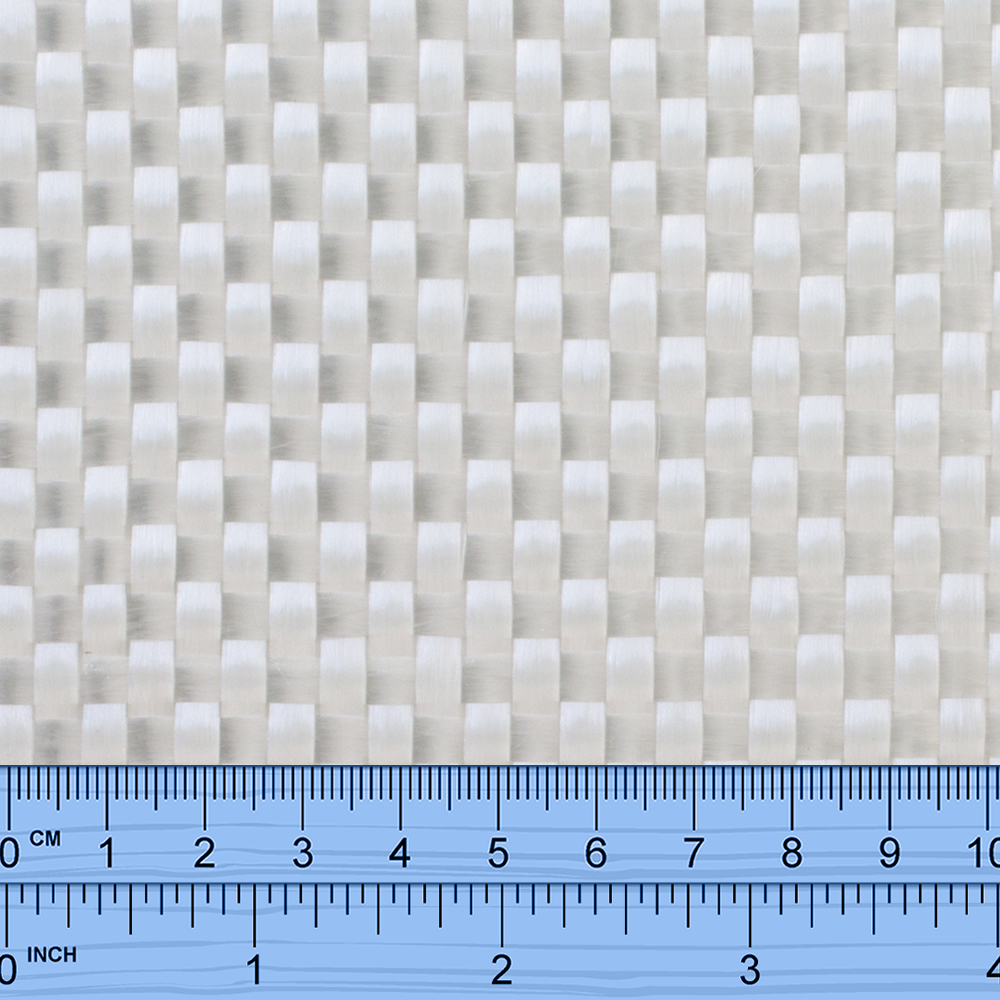
Woven Roving is a widely used material in composite construction, with perfect properties of reinforcement, corrosion-resistance, and insulation. Provides high tensile and flexural strength in laminates.
At its best is sandwiched between alternating layers matting, ideally a balanced laminate, i.e., equal layers of matting on either side of Woven Roving. On its own it will be subject to delamination or 'peeling' from surface. Woven Roving's highest strength is in the direction of the warp and weft strands which are oriented at 90 degrees to each other.
Approximately over 90% of boat hull's over 20ft in length are built with Woven Roving within its construction. More common weights available are 300g mt/2, 600g mt/2 and 800g mt/2.

S Glassfibre or simply S Glass originally stood for High Strength, which provides greater strength and higher temperature resistance than industry standard E Glass. Compared to E Glass, S glass has up to 30 - 40% better tensile strength and up to 20% higher modulus of elasticity, it also has increased fatigue resistance and higher impact resistance. Used in applications such as marine and aerospace where the application are more critical.
For more information and a full range of Fibreglass Supplies please visit: www.ecfibreglasssupplies.co.uk
Author: G.Bates
This advice and information is given in good faith for guidance only. and is given without warranty, users should determine information given and using their own judgment to determine suitability.
